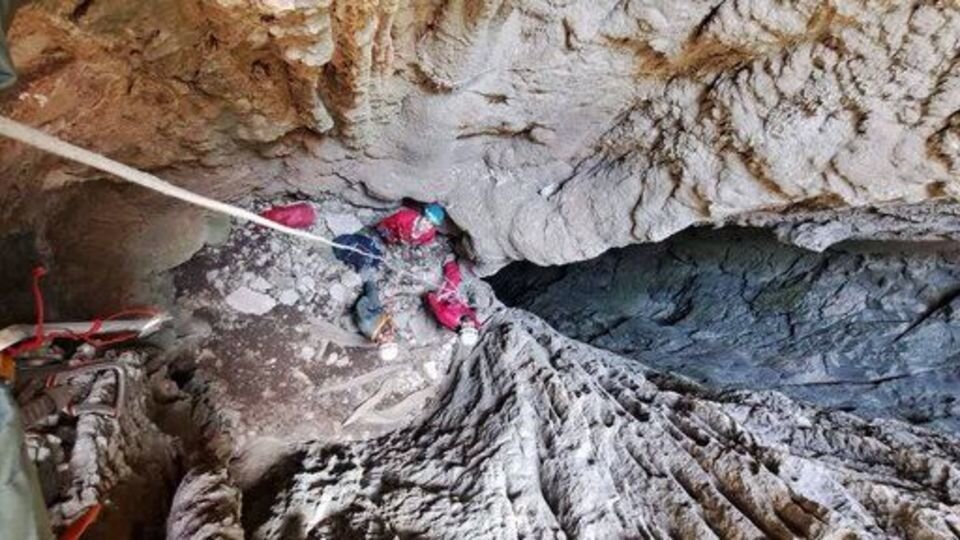Cave with natural significance discovered in southern Iran

TEHRAN — A natural cave has been discovered in Khabr National Park, located in Baft County, Kerman province, during a recent research program, according to the director-general of Kerman’s Department of Environment.
Mohsen Jafarinejad added that the finding occurred in line with a plan to identify and survey the local caves under the management of the province, ISNA reported.
A team comprised of the secretary of the speleology working group, environmental experts, and members of Kerman Caving Association recorded the cave's opening and completed the bolting and surveying operations, he said.
He recalled that the cave had been identified by environmentalists Ebrahim Alidadi-Soleimani and Hafez Rezvani for the first time during last year’s census and introduced to the Secretariat of Speleology Working Group.
Jafarinejad also said the difficult route leading to cave’s opening was followed and after recording the coordinates of the location, the technical team headed by Zeynab Yousefipour, representative of Kerman Caving Association, conducted the rolling and rope laying operations.
The operation resulted in recording the depth of 150 meters for the well inside the cave, he added.
Mehrangiz Heydarian, who is in charge of Secretariat of Kerman Speleology Working Group, said choosing a suitable name and protection rating for this cave is on the agenda of the related working groups.
Planning for optimum exploitation of this natural phenomenon in Khabr National Park will be one of the future measures, she added.
Khabr National Park has an area of about 12,000 hectares. There are five wildlife refuges called Ruchun (Ruchan) inside the park. The total area of Khabr National Park and Ruchan Wildlife Refuge is 150,000 hectares.
This area has high biodiversity, which is due to the high altitudes, numerous plains, and diverse watersheds. Groundwater is the main resource supplying the water of the park.
Khabr National Park gained the title of “protected area” in 1971. In 1975, Iran added more sections to the park. It was in the same year that the area was entitled “Khabr and Ruchan Wildlife Refuge”. UNESCO inscribed the area as a Cultural Tourism Attraction in 1991. In addition, most of the area was changed into a national park. Khabr National Park has a variety of landscapes, habitats, wildlife, and vegetation.
The climate of Khabr National Park and Ruchan Wildlife Refuge is mostly temperate, in some parts subtropical and tropical. High mountains alongside the flat and low plains are a feature of the region. The area has also dry, rocky and impassable mountains, valleys, ridges, mountainous forests, plains, and steppes.
Three types of cold, temperate and tropical climates in the park have led to the formation of different ecological systems. There are about 750 plant species identified in the area. The park had suffered drought for several years. However, vegetation and animal life were well resilient during drought.
There are four main habitats within the boundaries of the Khabr National Park and the Ruchan Wildlife Refuge. These habitats include the cold plain, cold highland, temperate part, tropical plain and subtropical highland.
KD
Leave a Comment